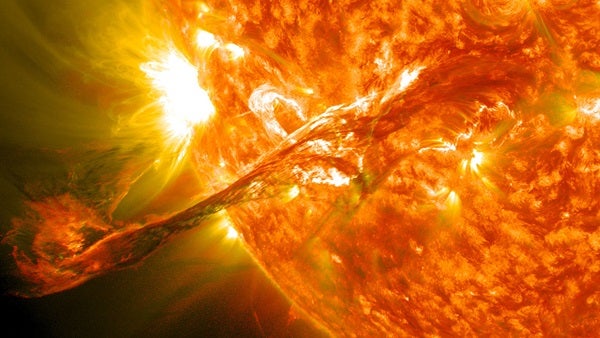Think of the Sun as a highly magnetic ball of gas. Following along magnetic field lines, giant loops of plasma can form that extend far outward into space from the Sun’s glowing “surface,” its photosphere. These loops of plasma are solar prominences, and they can measure many times larger than Earth’s diameter.
Prominences push out into the Sun’s thin, extremely hot atmosphere, called the corona. They radiate at lower temperatures than the corona itself. These prominences can last for days, sometimes even months, and are often associated with a very powerful surge of gas that flows outward in a giant solar “belch” — a coronal mass ejection that can light up Earth’s skies with an aurora and even interfere with our technology.
For solar observers, prominences are a joy. Of course to ever look at the Sun in any way, you need to do it properly and carefully. A solar filter that permits seeing prominences is a so-called Hydrogen-alpha (H-alpha) filter, which transmits the wavelength of light prominences give off.
If you have a telescope fitted with an H-alpha filter, you can see these tongues of reddish gas blasting above the Sun’s limb, and even watch them as they slowly change over minutes or hours. It makes an incredible way to appreciate our home star, the source of all the energy that makes life possible on Earth.










